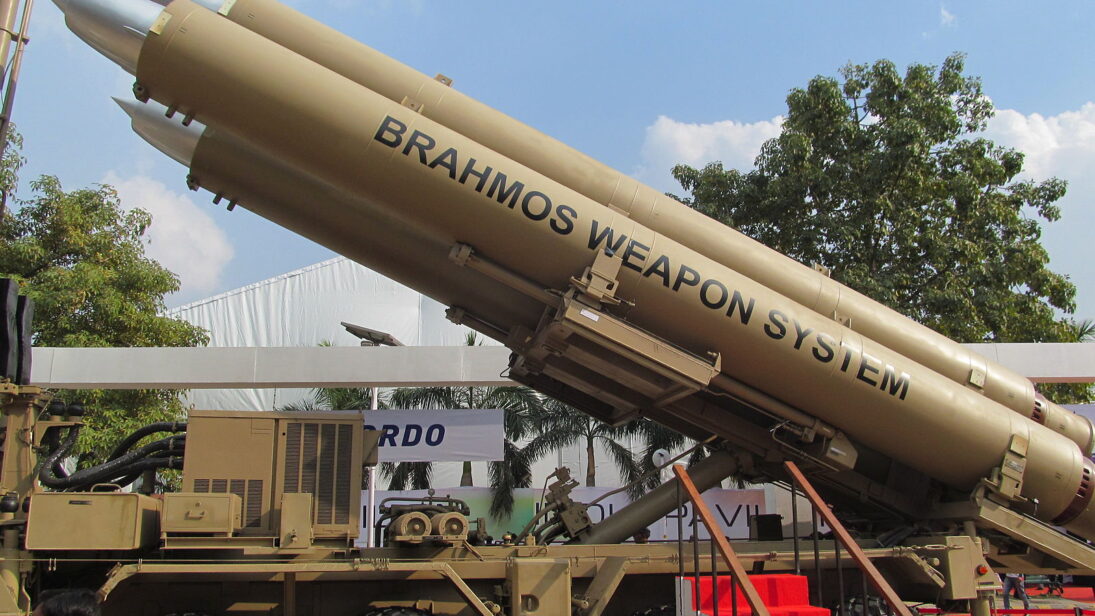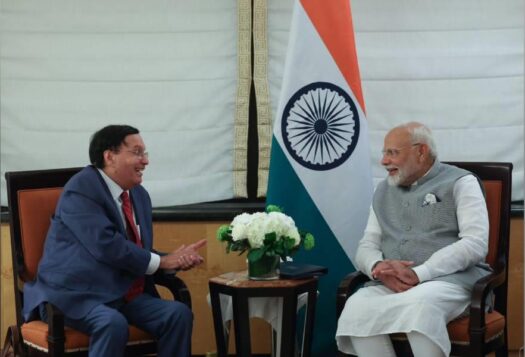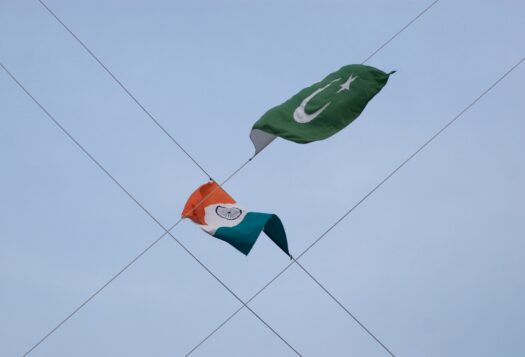
On March 24, 2022, Frank O’Donnell spoke with South Asian Voices Managing Editor Brigitta Schuchert and Associate Editor Isha Gupta on the key takeaways from India’s missile malfunction in Pakistan, and its significance in the context of the India-Pakistan relationship and nuclear security in South Asia. Frank O’Donnell is the Deputy Director of the South Asia Program. O’Donnell has written extensively about inadvertent and accidental escalation risks within the China-India-Pakistan trilateral nuclear rivalry and Indian nuclear force developments and their relevance for U.S. regional strategic interests.
India has referred to the accidental firing as a technical malfunction, how common are malfunctions of this sort, and what could cause this to happen?
The more common type of missile test failure, in most states, is when the missile is launched according to plan, but when a component malfunctions mid-flight, and the missile veers off course and is then destroyed in-flight by the test managers. This test failure can be due to malfunctions in various parts of the missile, for example its navigational or propulsion systems.
However, the phrasing of the Press Information Bureau announcement, of “accidental firing,” suggests a more concerning type of missile failure, relating to some human or technological element of the command-and-control system authorizing the initial launch of the missile. Even if the Prime Minister’s Office and Ministry of Defense had given their prior approval for the test-launch, and the Indian Air Force had scheduled the test for that day, the nature of this malfunction still qualifies as an unauthorized missile launch.
It was later reported that the missile launched was the BrahMos cruise missile, what is the significance of this?
It is significant for its strategic, but also symbolic, importance to the Indian military. Symbolically, this is a technologically leading missile in India’s arsenal, and is its only supersonic cruise missile. It is heavily promoted for export to other states, and India concluded an agreement to sell BrahMos missiles to Philippines in late January. For such a grave accident to occur with a BrahMos missile, as arguably the symbolic flagship platform in India’s missile arsenal, is therefore more damaging to India’s efforts to demonstrate the sophistication of its precision-guided munitions than if this had occurred with other missiles.
For such a grave accident to occur with a BrahMos missile, as arguably the symbolic flagship platform in India’s missile arsenal, is therefore more damaging to India’s efforts to demonstrate the sophistication of its precision-guided munitions than if this had occurred with other missiles.
It is strategically important as Pakistan believes that BrahMos missiles are dual-use, and that some missiles may be part of India’s nuclear forces. Even if not, there have strong indications that Indian military planners see the BrahMos as effective for conventional counterforce missions. The BrahMos-II (K), a supersonic variant, has been described by Indian officials as “well suited to attacking hardened or deeply buried targets such as bunkers or nuclear and biological-weapon storage facilities.” We are therefore fortunate that Pakistan did not respond more aggressively to what it could have potentially interpreted as the first salvo of a nuclear attack.
Are there Standard Operating Procedures for when something like this happens?
There will be an option for the test managers to order the missile to self-destruct as soon as the unauthorized launch was detected, just as there would be for a launch which veered off course. Pakistan military briefings claim that there was a period of about three minutes from the launch until it crossed the international border, and then another four minutes before it crashed inside Pakistan. There was more than enough time for the Indian test managers to react and order the missile to self-destruct within the first minute after launch.
Media reports emerged afterwards that Pakistan had considered a retaliatory strike but did not because the launch was assessed to be an accident. What might go into an assessment of this sort?
This suggests that Pakistan had effective surveillance and intelligence regarding the BrahMos missile preparation and launch. The Pakistan military briefing revealing the exact launch time and location and timestamps of it crossing the border and crashing into Pakistani territory suggests that Pakistan was closely monitoring the BrahMos site. In judging the accidental nature of the launch, Pakistan’s surveillance could include observing if the missile was being armed with a warhead, and assessing at the point of launch that it was unarmed. The launch of a single missile, as opposed to several or dozens of simultaneous missile launches, is more suggestive of an accidental launch. The absence of corresponding Indian military movements or intercepted communications “chatter” was also suggestive of an accident rather than an intentional attack.
Watch Below: Frank O’Donnell on the Accidental Indian Missile Launch
Are there likely to be any international repercussions to this, or penalties from international arms control or missile control regimes?
There are few cases in history – if any – of a nuclear-armed rival accidentally firing a missile into the territory of another nuclear-armed rival. India and Pakistan were both exceptionally fortunate that this incident did not occur within a strategic crisis, such as the 2019 Pulwama-Balakot crisis. In that case, this accident could have led to significant military escalation. India’s missile command-and-control protocols will need to be urgently reviewed to identify and correct the fault(s) that led to this unauthorized launch, and no further missile tests should be conducted until this is complete.
India’s missile command-and-control protocols will need to be urgently reviewed to identify and correct the fault(s) that led to this unauthorized launch, and no further missile tests should be conducted until this is complete.
The unauthorized launch has also aroused global concern. India will not incur any direct penalties from international missile and arms control regimes and is unlikely to suffer long-term in its strategic relationship with the United States. The greater danger to its relationship with the United States remains India’s stance on the Russian invasion of Ukraine. However, India’s reputation as a responsible state will be undermined by this incident, and even more so if India does not take corrective measures to reassure its own citizens and the world of the surety of its missile forces. While the suspension of missile tests and review of command-and-control procedures is a first step in this direction, a more significant step would be to exchange letters with Pakistan formally extending the 2005 ballistic missile test pre-notification agreement to also include cruise missiles. Agreeing a similar protocol for immediate notification of accidental launch of missiles would also be wise in terms of limiting the potential grave impacts from a recurrence of this incident.
Are there any aspects of the incident that we have not covered yet that you think are essential for policymakers to consider?
It demonstrates how quickly a crisis can potentially emerge within the India-Pakistan-China strategic triangle, and the increasing risk of such outcomes as missile-centric warfare becomes more central to the strategic planning of all three states. While it is fortunate that this episode did not militarily escalate, continual diplomatic attention and focus is required to build confidence-building measures and crisis stability protocols within this triangle to prevent a similar accident sparking a major conflict in future.
Editor’s Note: This article is part of a three-part series featuring authors from India, Pakistan, and the United States reviewing the implications of India’s accidental missile launch on March 9, how it happened, why relative calm ensued, and what the crisis reveals about India-Pakistan relations and prospects for Confidence Building Measures (CBMs) in the future. Read the full series here.
***
Image 1: Anirvan Shukla via Wikimedia Commons


